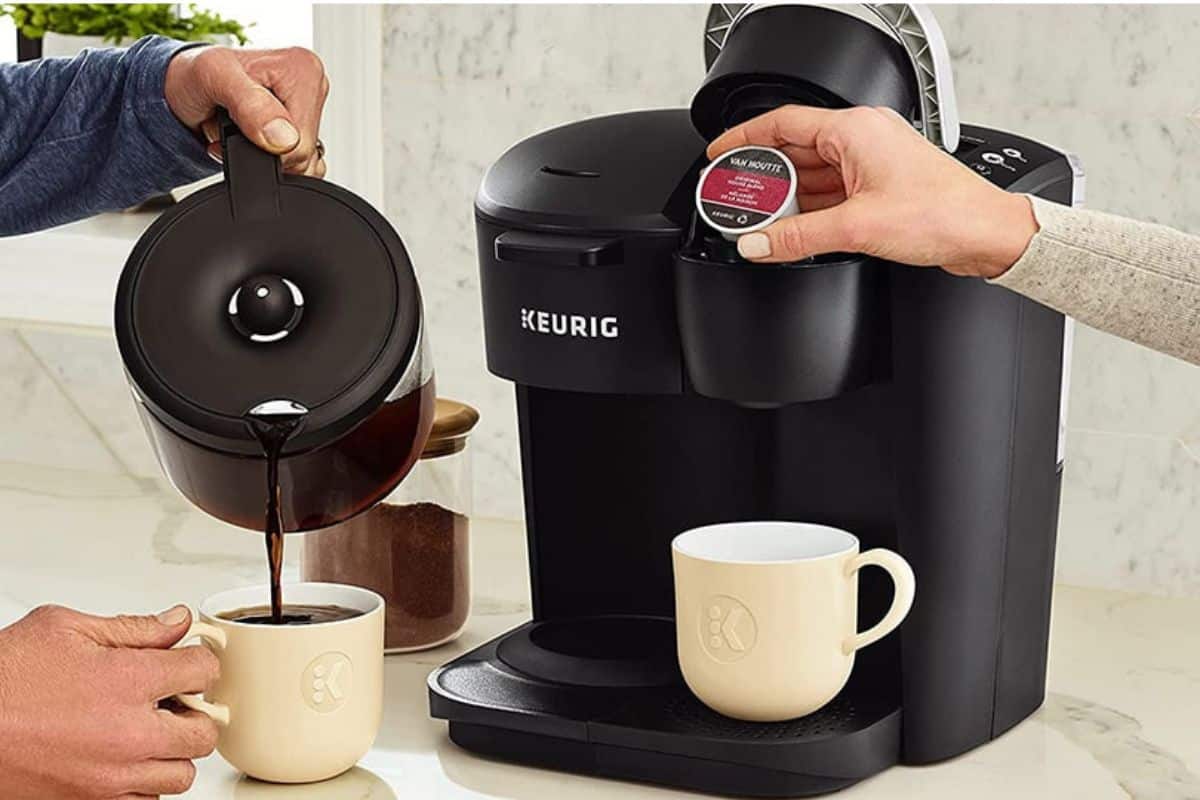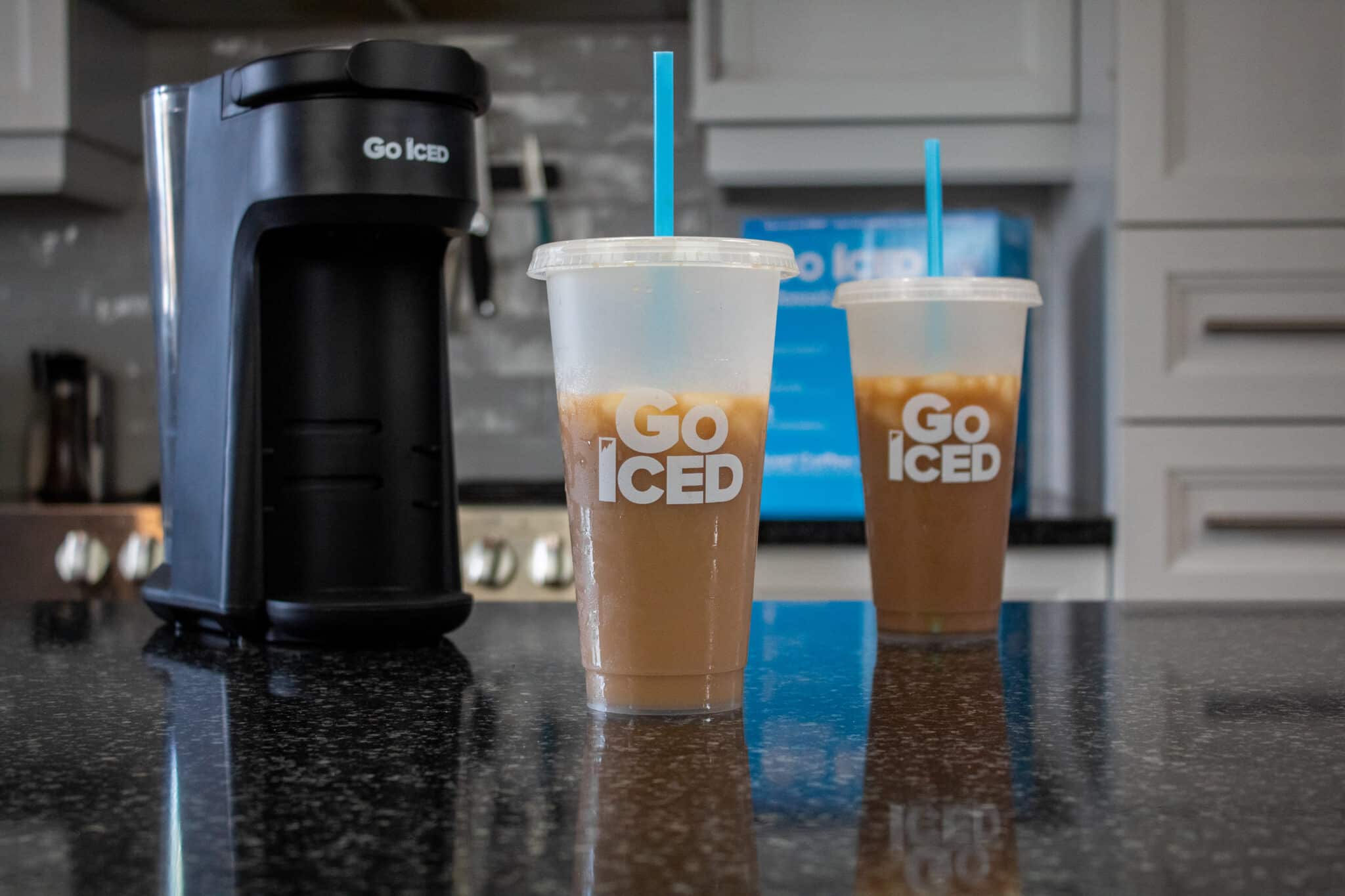It’s pretty common to see a drip coffee maker in pretty much every home across America, but what actually is drip coffee?
Drip coffee is a coffee brewing method that’s made in an electric coffee machine; it heats water and drips it through coffee grounds that are held in a paper disposable filter. The coffee collects in a jug on a hot plate and is also known as filter coffee.
It is similar to pour-over coffee which is the manual version of using a kettle to gently and precisely pour hot water over your coffee grounds through some sort of filter.
Although both methods are very similar the results are completely different and the coffee produced can be like night and day.
It’s also interesting that not all drip coffee machines are called automatic pour over coffee machines, it seems that you need to cross over a certain threshold of quality to become known as an automatic pour over coffee maker.
And to be honest, I completely agree, you can pick up a drip machine for 30 bucks and the coffee it makes is just terrible, it doesn’t deserve such a high title as pour-over!

5 Defining Features of Drip Coffee
1. The coffee passes through a cone-shaped filter
Coffee filters in a drip machine are always cone-shaped and pretty much always paper. Permanent filters are becoming a lot more common now which are usually plastic or sometimes metal, but the coffee they make isn’t as smooth so they often get put in a cupboard in favor of paper filters.
Under cone shaped filters I count basket filters too, which are the most common type of filter you get in coffee shops and in diners.
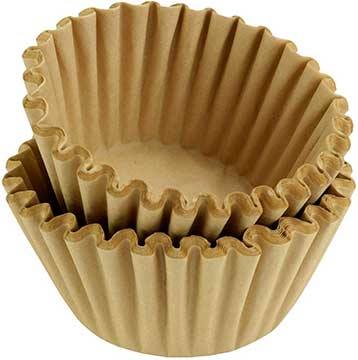
2. The coffee grounds don’t remain submerged
Immersion coffee is coffee that’s made by completely submerging your coffee grounds in water before allowing them to be filtered, think French press coffee or an AeroPress, in which the coffee gets steeped like a teabag.
In drip coffee, you find that the water is allowed to flow through the ground coffee never fully submerging it.
3. No technique is required
If you are reading about any sort of technique other than, put in ground coffee, put in water, then you’re probably looking at making pour-over coffee. Then you’ll need a special kettle and to learn different ways to pour the water for better coffee extraction.
Nah, ground coffee, water, boom. All you need to make a good cup of coffee.
4. The equipment used is inexpensive
Some drip coffee machines can cost a lot of money, but as the price goes up you start to see a change in the names of the products, you start to move from drip coffee machines to automatic pour-over coffee machines.
And while the functionality is largely the same, I’d say they’re different.
It’s one of those hard differences to nail down, it’s like a ship and a boat, you can fit a boat on a ship but you can’t fit a ship on a boat… WHAT?
Anyway, drip coffee is usually the lower-end price but that doesn’t mean it won’t taste good.
5. It can also be called filter coffee
If you’re in a cafe you might see filter coffee on the menu rather than drip coffee. This is coffee that’s made in a drip machine and kept in a coffee pot for a few hours until it’s deemed that it’s going stale.
And if you’re in a diner then the coffee will stay in the pot until it’s finished no matter if it’s stale or not!
How To Make Drip Coffee
Drip coffee couldn’t be easier to make, but to make it well and get the best coffee you can out of your drip machine takes a little care, so I’m going to lay out the steps you need.
Step 1. Get a half-decent coffee brewer
If you are using a super cheap or super old coffee machine then it’s not going to give you a great end result.
If you want a truly great cup of coffee you’re going to have to spend towards $300 on your machine but even the $50-100 range will get you a half-decent machine, one that most coffee drinkers will be able to taste the difference from.
I’ve got my recommendations below.
Step 2. Use fresh coffee
Brewed coffee tastes the best when it’s made with fresh coffee, the fresher the better which is why it’s a great idea to get yourself to a local coffee roaster. They’ll keep you right, and if you don’t want to go all about and get a burr grinder then they’ll be able to grind it just right for you and keep you drinking wonderful coffee.
This is true for any brew method whether a dripper is involved or not, but good coffee comes from fresh coffee beans no matter what type of coffee it is.
Step 3. Weigh out your coffee and water
This is the coffee ratio, and a great coffee ratio is 1g of coffee to 15-17g of coffee. Or 60g per 1L of water. And yup, I want you to break out a scale and weigh out your coffee into the basket and weigh out the water.
But I understand if you don’t want to do that, at least not yet, once you start getting really into it you’re going to be weighing out your coffee before every brew.
And if you don’t want to do that then 2 tablespoons per cup of coffee is a good place to start. Then you can adjust as you go to find your perfect sweet spot of coffee.
Step 4. Let It Brew
Brew time for a full pot in an 8-12 cup coffee machine is typically about 7-10 minutes. It depends on the power of the heating element, whether you put in cold water or hot water and what water temperature it brews at.
The water gets heated up, then the dripper sort of sprays the coffee grounds with the hot water and it slowly soaks through down into the carafe. The amount of time varies from machine to machine, a Mr. Coffee will go much faster with worse results compared to something fancy like a Moccamaster.
But the water flows through the grounds into the carafe, that’s the most important thing to know. And the best thing about drip coffee compared to pour over coffee is you just set and forget it, it’ll just happen by itself.
Step 5. Drink it straight away
Just as with the beans, fresh coffee is the best coffee.
I looked into this more in this article about letting coffee sit out, but basically, coffee tastes great from the carafe for about the first 30 minutes then the coffee flavor starts to drop off over the next 24. I wouldn’t recommend drinking coffee that’s been sitting out for more than 24 hours.
This is a good rule of thumb for most coffee drinks, whether it’s a latte or a cold brew, or any other specialty coffee drink.
Best Drip Coffee Machines
1. Top Choice & Best Tasting – Breville Precision Brewer Thermal Coffee Maker
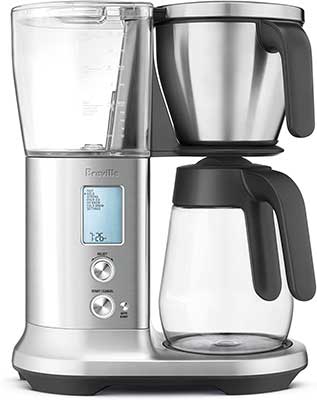
- 60 oz 12 cup capacity
- Makes cold brew and iced coffee
- Automatic or adjustable
- Blooms the coffee
- 1-year warranty
Pros
- Makes cold brew and iced coffee
- Brews at the correct temperature
- Makes hot coffee
- SCA approved
- Makes superb coffee
Cons
- Made in China
- Only a 1-year warranty
This was really neck and neck for the top spot, in the end, I went with the Breville Precision for one reason… It’s in Stock! The Moccmaster has had limited stock for well over a year now which is no use, because great as it is if you can’t buy it’s no use. Both make superb coffee so buy the one you can actually buy.
The Precision brewer allows a lot more control and customizability in your drip maker. You can use the gold standard setting which will auto adjust the settings to make you the Gold Standard cup of coffee as described by the SCA.
Or you can use the My Brew setting where you can adjust brew temperature, flow rate, and bloom time. Which if you understand can be quite exciting but if that all sounds like gibberish to you don’t worry, the gold standard sets those parameters automatically.
You can also use it to make cold brew coffee and iced coffee which is pretty nifty. and it’s a proper cold brew as well steeping it in the upper tank for around 10 hours before releasing.
So if you want to explore the world of coffee this is a great choice, and the coffee it makes on the standard-setting is superb, I’d even go so far as to say it’s on par with the Technivorm above.
My main problem with it is that it’s made in China with a 1-year warranty, while the Moccamaster is made in Holland and has a 5-year warranty. So if you want a coffee maker that’s going to last and last then the Moccamaster is a better choice.
However, there definitely isn’t a theme of the Breville breaking down so it should be fine long term but I can’t confirm that one way or the other if I’m lucky I’ll get to come back in 5 years and update this article but we’ll see.
If I were buying I wouldn’t be put off by the shorter warranty.
Overall a great choice, with plenty of fun settings to play around with, a lot of control over your coffee, or a press and go function that will make you the best cup of at-home drip coffee you can drink.
2. Best Budget Under $100 – Cuisinart DCC-3200P1 Perfectemp Coffee Maker, 14 Cup Programmable
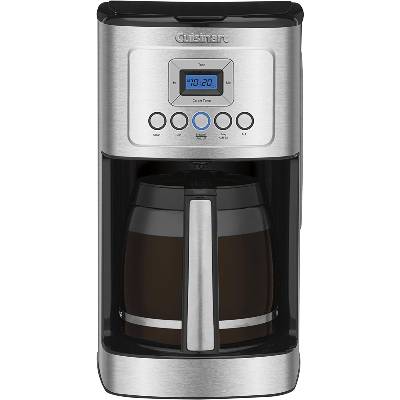
- 70 oz 14 cup capacity
- Adjustable brew strength
- Built-in water filter
- Fully automatic
Pros
- Great price
- Makes great coffee
- Large capacity
- Plenty of settings to adjust your brew
- Water filter included
Cons
- The hot plate isn’t adjustable
- Could look better
- Coffee is superb but not as high quality as a more premium maker
I very nearly made this my top choice in the article, sitting here looking at them both and I couldn’t decide.
But in the end coffee quality won and the Moccamaster went on top. It’s just not expensive enough to have the same top-quality components and design.
But it makes damn good coffee, and it makes a lot of it in a 14 cup glass carafe, not to mention as the name “Perfectemp” suggests it makes coffee at the correct temperature and the showerhead design allows optimal coffee flavor extraction.
What goes wrong? Not much to be honest, you can’t adjust the temp of the warming plate, it doesn’t look as good, and there’s something about it that’s just not as premium or luxurious as the Moccamaster or the Breville.
But if you’re not a crazy coffee person and you just want a good cup of coffee in the morning, easy to make, easy to clean, and tasty. This is the coffee maker for you.
You can also adjust the settings to have a stronger cup of coffee or if you’re looking for a single-serve you can set the 1-4 cup button and it will brew slower with a smaller amount of coffee so you still get a great cup.
Baristas be damned, I love this machine! It just makes great coffee at home.
Why People Love Drip Coffee
People love drip coffee because it’s easy to make, it’s quick to make and a cup of drip coffee tastes pretty damn good.
Does it taste as good as an artisanally made pour-over coffee? Of course not! But it tastes better than a percolator coffee that’s been horribly burnt and is leagues beyond an instant coffee.
And across all the brewing processes you can use to brew coffee you can get a really repeatable cup of coffee from a drip machine. If you want to become a home barista by all means get yourself an espresso machine and a coffee grinder, then drink cappuccino to your heart’s content.
But while I’m learning to be a home barista time and time again I use my drip machine first thing in the morning.
Plus there’s nostalgia and comfort from having the same coffee you can have at a diner, or that your parents make. And I’d personally take a nostalgic cup of coffee over the absolute best cup of coffee any day.
Drip Coffee Vs Pour Over

So similar and yet so different…
The difference between a drip coffee and a pour-over coffee is the amount of effort expended, if it’s an automatic or electric machine it’s drip coffee, and if you’re making it by hand it’s a pour-over coffee.
Because in both instances hot water is being poured over the coffee grounds and allowed to drip down through a filter. But the effort required is vastly different.
But from that increased effort you also get an increased return, because pour over coffee, when done correctly, is much tastier and has a much richer profile of flavors compared to drip coffee.
That’s because the pour over gives you much more control about the speed of extraction as well as making sure all the coffee grounds get evenly soaked for an even extraction across all your coffee grounds. Which all come together to make a really delicious cup of coffee.
Drip Coffee Vs French Press
These are pretty different in every respect.
French press coffee brews by completely submerging coffee grounds in water, where they stew until a filter is pressed through them. While drip coffee is never fully submerged and the water passes through the coffee grounds extracting flavor that way.
That’s why the grind sizes have to be different, French press grind size is much thicker so that it extracts more slowly, and drip coffee is a smaller grind size so that it extracts faster. And if you swapped the two you’d get horribly bitter french press coffee and weak and watery drip coffee!
French presses also use a metal filter which gives a thicker taste to the coffee, although you can use a paper filter.
And while you can buy a reusable metal filter for a drip machine most people prefer paper filters because the taste it gives you is much cleaner.
Drip Coffee Vs Percolator
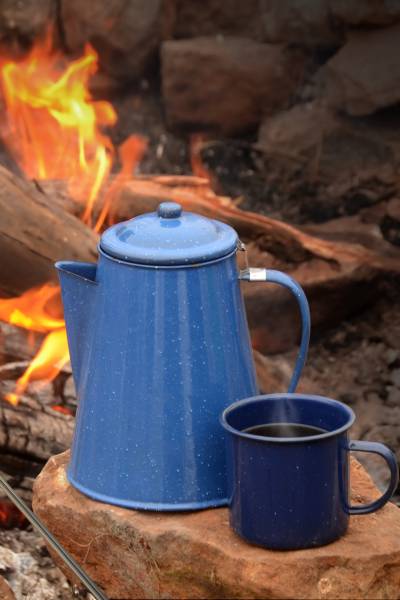
The clue is often in the name, and it’s no different here. Percolators, well, percolate the coffee. That means it is cycled round and round repeatedly through the coffee grounds until you take it off the heat.
This often leads to VERY strong coffee that is super over-extracted and bitter, which some people love but I am not a fan of.
This is an immersion brewing technique like French press and so yields a very different flavor to drip coffee which is lighter and cleaner in comparison.
This over-extraction is also why I prefer a Moka pot to a percolator, they look the same from the outside but a Moka pot has two separate chambers, and the water gets pushed from one chamber, through coffee grounds and into a separate chamber where it’s collected.
But I digress…
Drip Coffee Vs Espresso/Americano
Espresso coffee is made in a completely different manner to drip coffee, water is heated and pushed at very high pressure through ultra-fine coffee grounds to give you a very small, very strong coffee.
But an americano is more similar, it even looks similar to a drip or filter coffee.
But an Americano is made by adding hot water to an espresso, So it’s taking a small strong coffee and diluting it to a milder coffee, instead of making a milder coffee.
Confused?
Fair enough. All the different coffees are super similar, you wouldn’t believe how many different ways there are to extract flavor from a roasted coffee bean.
But once you get into it, you realize that they are all completely different and that they change the flavor into what can seem like a totally different coffee.
Final Thoughts
When most Americans think of coffee, they think of filter coffee. If you ask for a coffee, filter coffee is what you expect to get.
It’s delicious, it’s easy, is it the best tasting coffee? Probably not but it’s the most common and that makes it the best in its own way.
Related Reading
15 Best Drip Coffee Makers (Finding Fantastic Filter Coffee)



